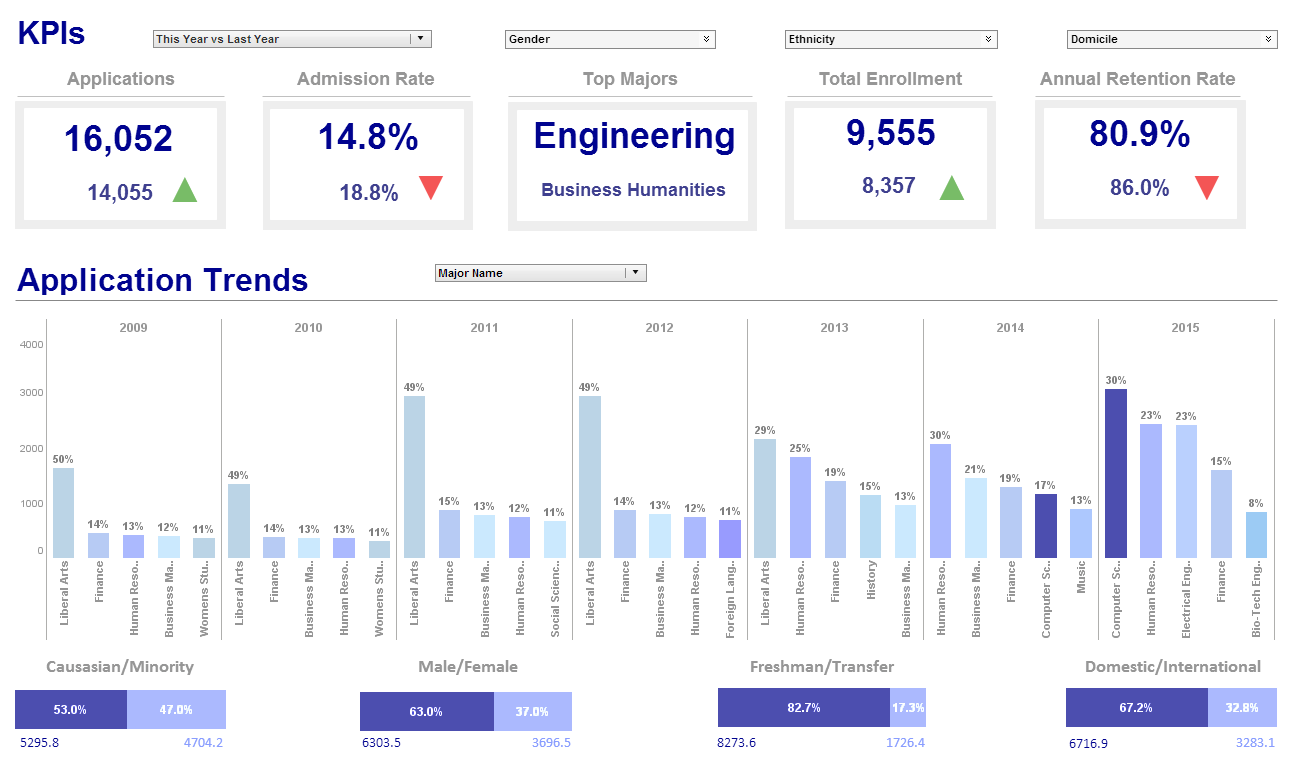The Three Dimensions of Analytics
This is a copy of the transcipt of a Webinar hosted by InetSoft. The speaker is Mark Flaherty, CMO at InetSoft, and he discusses the topic “Analysis and Exploration: Matching Tools and Needs”.
Mark Flaherty: So to start, I am offering a very simple, but elusive, question: What is analytics? There are so many definitions out there in the industry that it's completely confusing right now. No one seems to agree on what analytics is, but, I think everyone seems to know it when they see it. It’s one of those types of the things.
But, there definitely is a semantic issue, like there typically is for any commonly used word in our industry.Some people think about analytics as simply predictive type capabilities; others as advanced math, statistics; others as speed of thought visualization; and still others, maybe a little old school of thinking a bit, as multi-dimensional analysis, OLAP and things like that.
So I don’t really have a great definition to give but I can tell you this: I have looked into analytics for quite some time now. And I will say that it has three dimensions.
| #1 Ranking: Read how InetSoft was rated #1 for user adoption in G2's user survey-based index | Read More |
The Degree of User Interactivity
The first is the Degree of User Interactivity, the second is Data Volume, and the third is Calculation Complexity. And if you plot any analytic activity from analytics, whatever that is, to reporting, to even data mashups or search or optimization or simulation, you can plot them on these three axes. What you are seeing here is that analytics differentiates itself from other analytical activities by the scale of user interactivity, by the volumes of data that it addresses, and by the complexity of calculations that are done in an analytical environment.
So whereas you might use a spreadsheet to do simple calculations and even some more complex ones, Excel has many, many types of calculations in there. With an analytical tool you can do those plus things like decision trees and machine-learning type algorithms that are much more sophisticated. And typically with analytics, we are not just analyzing data that you can fit in a spreadsheet, or 64,000 records. You are now analyzing perhaps up to terabytes or even petabytes of data.
And obviously, probably the hallmark of analytics is the degree of user interactivity. It’s not only interactivity where users simply point and click to query data, but where they can navigate through it and massage and manipulate it to get it to look and feel the way they want.
Calculation Complexity
Calculation complexity refers to the level of difficulty or intricacy involved in performing mathematical or computational calculations, particularly in the context of analyzing data or solving problems. This complexity can arise from various factors, including the size and complexity of the dataset, the computational resources required, and the complexity of the algorithms or mathematical models used. As datasets grow larger and more diverse, and as analytical tasks become more sophisticated, the complexity of calculations increases, posing challenges in terms of computational efficiency, accuracy, and scalability.
In many fields such as finance, engineering, and scientific research, calculation complexity is a critical consideration that impacts decision-making, resource allocation, and problem-solving. Complex calculations may involve iterative processes, nonlinear relationships, multidimensional data analysis, or optimization techniques that require advanced mathematical methods and computational algorithms. Managing calculation complexity effectively often involves leveraging specialized software tools, high-performance computing resources, and algorithmic optimizations to accelerate calculations, minimize computational errors, and extract actionable insights from data. Additionally, techniques such as parallel computing, distributed processing, and algorithmic parallelization can help mitigate the computational burden associated with complex calculations, enabling organizations to tackle increasingly intricate analytical challenges and drive innovation and discovery.
So those are the three dimensions of analytics. And I think things like analytics and reporting differentiate by degree. I want to spend a little bit of time just talking about the differences between those two things. But, I think most people know what reporting is, or at least have a sense of that. That’s another commonly used term that perhaps has many definitions as well.
Essentially, reporting is a big information sandbox that we push out to people. These sandboxes have gotten large over the years and much more interactive, but still there are boundaries to these sandboxes. Users can navigate at will but eventually they will hit the boundary and won't be able to get more information.
| Next: Reporting Jump-Off for Analytics |
